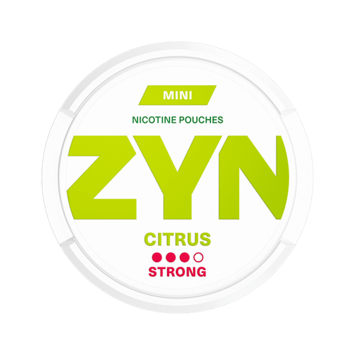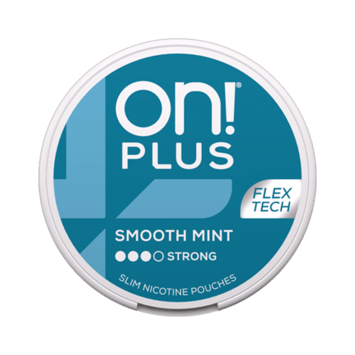does nicotine pouches cause cancer
Philip Plainstein

Nicotine pouches, such as Zyn and On!, have gained popularity as a tobacco-free alternative to smoking and traditional nicotine products. These small bags contain nicotine, flavourings, and other chemicals, marketed as a safer option for those seeking to quit smoking. However, concerns about their health implications persist.
Current research suggests that nicotine itself does not directly cause cancer but may increase the aggressiveness of tumours. Nicotine pouches, while lacking tobacco leaves, still contain various chemicals whose long-term effects are not fully understood. This uncertainty has led to debates about their safety.
Brands like Zyn have been under scrutiny, with studies indicating the presence of cancer-causing chemicals in some products. Despite being marketed as safer, these pouches carry risks, including potential links to oral health issues and cardiovascular problems.
In summary, while nicotine pouches may offer a less harmful alternative to smoking, their connection to cancer and other health risks requires further investigation. This article explores these aspects in detail, providing clarity on the safety and implications of using nicotine pouches.
Introduction to Nicotine Pouches and Their Rising Popularity
Nicotine pouches have emerged as a popular alternative to traditional tobacco products, offering a unique way to consume nicotine without tobacco leaves. These small, convenient pouches are placed between the gum and lip, providing a discreet and modern method for nicotine intake.
What Are Nicotine Pouches?
Nicotine pouches are compact, pre-portioned sachets containing nicotine, flavourings, and other ingredients like sweeteners and plant fibres. They are designed to deliver a controlled amount of nicotine, making them appealing to those seeking to quit smoking or reduce their tobacco use.
Understanding the Product Composition and Brands
Popular brands like Zyn and On! have contributed to the surge in popularity of these pouches. They are often marketed with attractive packaging and a variety of flavours, which has particularly resonated with younger demographics. The product’s composition varies, with some containing higher nicotine levels, while others focus on mild flavours.
Despite their appeal, it’s important to note that these products are not approved as nicotine replacement therapy (NRT), unlike gums or patches.
As their popularity grows, so does the scrutiny regarding their health implications and regulatory status.
How Nicotine Pouches Work and Their Health Implications
Nicotine pouches function by placing a small sachet between the gum and lip, allowing nicotine to be absorbed through the mouth’s lining. This method is different from other nicotine products but shares similarities with them in terms of delivery.
Mechanism of Nicotine Absorption and Potential Side Effects
The absorption process involves the mucosal membranes in the mouth, which absorb nicotine into the bloodstream. This method is comparable to prescribed nicotine replacement therapies in terms of dosage, though it works differently.
Using these pouches can lead to side effects such as gum irritation and an increased heart rate. Systemic effects may include changes in blood pressure and heart rate, which can be concerning for some users.
Common side effects reported by users include mild issues like hiccups and stomach upset. However, long-term use can lead to more significant health concerns, particularly for those using these products extensively.
Continued use of nicotine pouches poses risks to heart health, though they are generally considered less harmful than cigarettes. Despite being marketed as a tool to help quit smoking, there is still a risk of nicotine addiction, as with any nicotine product.
Given the potential health implications, it is crucial for individuals to consult with healthcare professionals before using nicotine pouches. Emerging research highlights the importance of understanding the full scope of their effects on health.
does nicotine pouches cause cancer? An In-Depth Look at the Research
Research into whether nicotine pouches cause cancer has yielded mixed results. While nicotine itself is not classified as a direct carcinogen, studies suggest it may play a role in promoting tumour growth. This section explores the current scientific understanding of nicotine’s impact on cancer risk, particularly in the context of oral cancers.
Examining Nicotine’s Role as a Tumour Promoter
Nicotine, while not a direct cause of cancer, may influence the growth and aggressiveness of existing tumours. Recent studies indicate that nicotine can affect cell proliferation and apoptosis, potentially exacerbating cancer conditions. This is particularly concerning for users with pre-existing health conditions.
Expert Studies and Emerging Scientific Evidence
Expert studies, including those comparing nicotine pouches to traditional chewing tobacco, provide valuable insights. Nicotine pouches generally contain lower levels of harmful chemicals than chewing tobacco, but their long-term effects remain uncertain. For instance, while chewing tobacco is strongly linked to oral cancers, the risks associated with nicotine pouches are still under investigation.
Adults seeking alternatives to smoking may find nicotine pouches a less harmful option, but caution is advised. The uncertain long-term effects on blood circulation and oral health necessitate further research. Young persons, in particular, should be vigilant, as nicotine addiction and potential health risks are concerning.
In conclusion, while nicotine pouches may offer a safer alternative to smoking, their connection to cancer and other health risks requires further investigation. Ongoing research is critical to understanding their full impact on health.
Regulatory Insights and Comparisons with Nicotine Replacement Therapy
Understanding the regulatory landscape of smokeless tobacco products like nicotine pouches is crucial for consumers and policymakers alike. This section delves into the current regulatory frameworks in the UK and the FDA’s stance, highlighting key differences in how these products are managed compared to traditional nicotine replacement therapies.
UK Guidelines and FDA Perspectives on Nicotine Products
In the UK, nicotine pouches are not subject to the same stringent regulations as cigarettes or other tobacco products. Similarly, the FDA in the US has adopted a more lenient approach, acknowledging that while these products reduce exposure to harmful chemicals, they are not without their side effects and regulatory challenges.
| Regulatory Body | Key Guidelines | Comparison to NRT |
|---|---|---|
| UK | Less stringent than cigarettes; focus on reduced harm. | Not approved as NRT; different regulatory pathway. |
| FDA (US) | Recognizes reduced harm but notes side effects and regulatory issues. | Different regulatory classification compared to patches and gum. |
Healthcare professionals are advised to recommend nicotine replacement therapy (NRT) options like patches or gum, which have undergone rigorous testing and are proven to aid in smoking cessation. However, the rise of smokeless tobacco products like nicotine pouches presents a regulatory problem, as their long-term effects are still under investigation.
Over the years, regulatory attitudes have evolved. For instance, in 2018, certain countries banned high-nicotine pouches, while others introduced new laws to address synthetic nicotine products. This year-on-year evolution highlights the dynamic nature of regulations in response to emerging research.
When comparing the safety profiles, conventional NRT options generally have a more established track record. However, smokeless tobacco products like nicotine pouches offer a different risk-benefit analysis, particularly concerning side effects and potential health problems.
For those considering these products, staying informed about regulatory changes and consulting official guidelines is essential. The landscape is continually shifting, so keeping abreast of the latest developments can help make informed decisions about smokeless tobacco product use.
For more information on where nicotine pouches are illegal, visit our guide: Nicotine Pouches Illegal Status.
Social Impact and Risks for Different Demographics
The rise of nicotine pouches has sparked concerns about their societal implications, particularly regarding their appeal to younger demographics. These products are often marketed through appealing flavours and sleek packaging, making them attractive to a younger audience despite potential health risks.
Marketing Tactics and Appeal to Young People
Recent studies highlight how aggressive marketing strategies on social media platforms have inadvertently encouraged the use of nicotine pouches among non-smokers. This trend raises concerns about the long-term health implications, especially for young individuals whose brains are more susceptible to nicotine addiction.
Comparisons with Traditional Tobacco and Alternative Therapies
While nicotine pouches are often perceived as a safer alternative to traditional tobacco products, they still pose significant risks. Long-term exposure to the chemicals in these pouches can lead to mouth irritation and other side effects. Research suggests that these products may contribute to oral health issues such as gum irritation and mouth sores, similar to the risks associated with smokeless tobacco.
It is crucial for consumers to weigh the benefits and potential risks when considering nicotine pouches. While they may offer a less harmful alternative to smoking, their long-term effects on oral health and overall well-being require further investigation. For more information on the potential risks, visit this study and this guide to explore the topic in depth.
Final Reflections on Nicotine Pouch Use and Future Directions
As the debate surrounding nicotine pouches continues, it’s clear that their role in smoking cessation and harm reduction is still unfolding. While these products offer a potentially safer alternative for adult smokers seeking to reduce their tobacco use, significant research gaps remain. The long-term impact of using nicotine pouches on heart disease and overall health is still under investigation, making it crucial for users to approach these products with caution.
Research has shown that the ingredients in nicotine pouches differ from those in traditional nicotine replacement therapies (NRTs). These differences highlight the need for further studies to understand their comparative safety and efficacy fully. Additionally, public perception and media coverage play a significant role in shaping the debate around these products, influencing both their popularity and the scrutiny they receive.
Looking ahead, future research should focus on the long-term health outcomes of nicotine pouch use, particularly concerning heart disease and other potential risks. Regulatory bodies may also need to adjust their policies as more data becomes available. Users are encouraged to stay informed about the latest developments and consult healthcare professionals before making decisions about these products.
In conclusion, while nicotine pouches may provide a less harmful alternative for smokers, their use should be a well-informed decision. By combining scientific insights with personal responsibility, individuals can navigate the evolving landscape of nicotine products more effectively.









